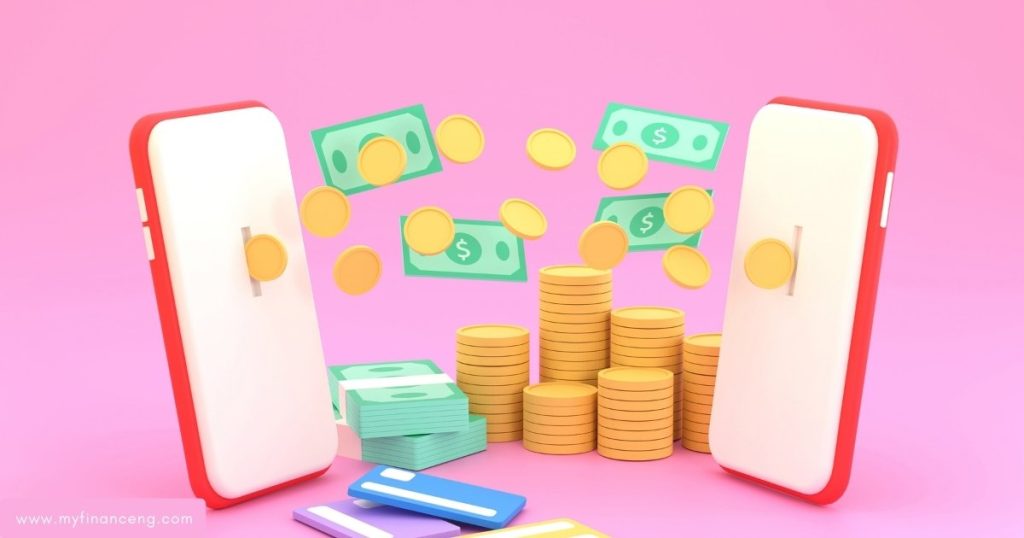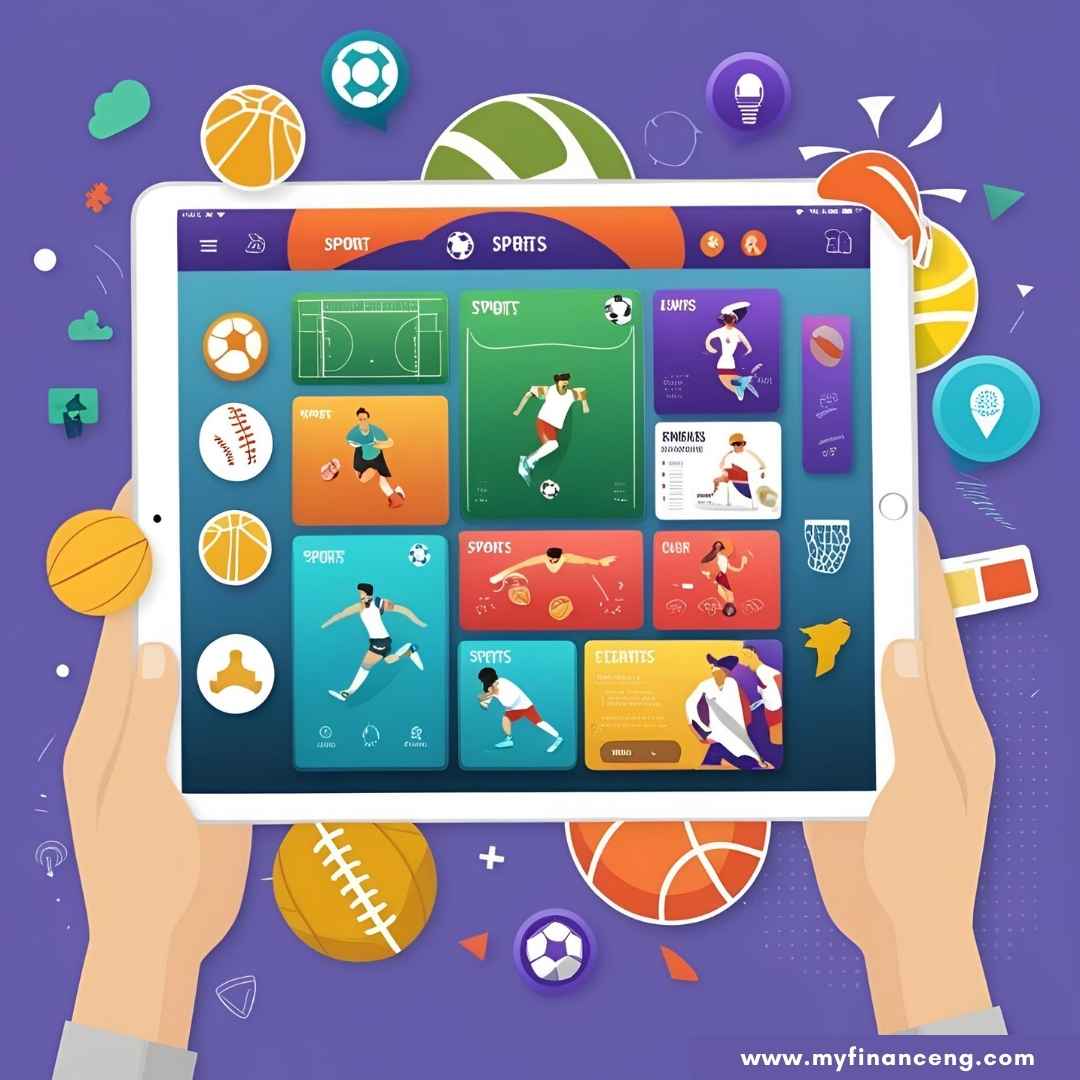Introduction
Learn how do fantasy sports apps make money through subscriptions, ads, entry fees, sponsorships, and more in today’s competitive market.
Fantasy Sports apps have become an essential part of the world of sports, and they have made millions of people active in sports in an engaging and challenging atmosphere. These apps have evolved in terms of their features and come with perks that intrigue their users.
To learn their secrets and know how these apps make money. In today’s cutthroat market, fighting for the user’s attention, the monetization methods utilized by fantasy sports apps are essential for their financials and the business’s overall potential.
Fantasy Sports Apps – The Business Model
Fantasy sports apps usually work on multiple revenue streams that help them earn huge revenues.
Behavior (Subscription) Revenue Model
Some news, fantasy sports, and other apps, as do other apps, provide subscription-based access. Such features frequently include more data, expert advice, and contests for higher stakes, which help keep users engaged and retained.
For instance, specific applications have special features that let players follow along with their favorite players’ stats, get an overview of the game, and make better predictions.
The subscription approach is highly effective because it comes in at a steady and predictable rate.
The Freemium Model, Which Unlocks Premium Features
Other than the subscription, many apps also offer a freemium model, wherein access to the platform is free but other features are unlocked for payment.
Those features could be increased contest entries, availability of additional data points, and more complex data or special bonuses.
Freemium The basis of freemium is that users might be willing to pay for advanced functionality once they are hooked on the service.
Commercials and Sponsorships
Fantasy sports apps can also earn money from advertising and sponsorships. By teaming up with big names, they can also secure sponsorships, providing them with substantial financial backing.
These packages can include everything from banner ads and branded sweepstakes to sponsored leagues.
Advertisers win by landing right in front of an engaged audience who are already predisposed to their content, and fantasy sports apps can monetize their app by pairing up with the ads in this way.
Player Transaction Transaction Fees

Like the above, collecting transaction fees for charter transactions turns them into a profitable business. Some apps let users trade players, with a transaction fee for each trade.
Just as when users withdraw or deposit money into their accounts, apps typically assess a small percentage of their processing fee.
This income source can also be relatively constant, as players are constantly trading new players and moving money in and out of their accounts.
Earn From Users’ Interaction
Amounts Paid to Participate in Contests Involving Fantasy Sports
One of the significant sources of revenue for many fantasy sports apps is the entry fees users pay to play in the contests. These competitions, which range from daily to season-long leagues, usually pay users an entry fee.
The revenue from these fees feeds the app’s bottom line, part of which is leveraged to pay out cash prizes to the contest winners, which in turn creates a powerful reason to sign up and play.
Prize pools: A Major Income Source
Fantasy sports apps are also commonly known for having big prize pools on the line in contests, a percentage of which is funded by entry fees.
Although users provide the prize pools, much of the fees are funneled to the app, making it profitable. Prize pools are a very effective promotional weapon to create buzz and user competition.
Rake and Commission from Contests
Many apps collect a rake or commission on the contest fees, essentially a percentage of the amount wagered.
This model guarantees that the app is making money no matter who the contest winner is and that it is a consistent source of revenue.
The rake changes based on the kind and size of the contest, but it is always meant to be set at a level that can maximize profits while also offering competitive price points for the players.
Sponsorship and Partnerships
How Brand Partnerships Can Help Monetize
Brand sponsorships are fundamental arrangements for the monetization of fantasy sports apps. Apps can generate just as much revenue through these blue-chip third-party sponsorships.
These sponsorships could range from branded tournaments to in-app ads or product integrations. Linking up with consumer-facing brands adds credence and reach to fantasy apps, which is great for business.
Revenue Affect of Sponsorship Deals
Union deals also allow fantasy sports apps to make more money off their app by using the brand’s reputation and resources.
These apps frequently strike deals with major sports companies, broadcasters , and media organizations, allowing them to host prestigious events. These sponsorship contracts offer a massive revenue injection to the app and fame on the market.
Nickel And Diming / Microtransactions And IAPs
The Sale of Digital Goods and Powerups
Fantasy sports apps often monetize on virtual goods like custom avatars, badges, and in-game tokens to keep users engaged. Users can personalize their experience with these items, which they can buy within the app.
These in-app purchases create a steady income stream as players spend even more and become attached to the game.
Fantasy Sports Apps and Microtransactions
Fantasy sports app monetization has introduced microtransactions as a staple. Users can purchase small items or features, such as player upgrades or game aids, to enhance their performance in contests. These micropayments are an easy barrier to entry or cashing in on the app.
Data Analytics and Insights (How Do Fantasy Sports Apps Make Money)

Selling User Information to Third Parties
Fantasy sports apps also earn by selling user data to third-party firms. This data contains user profile, behavior, and participation data valuable to advertisers and other businesses trying to reach a particular user demographic.
However, such a system can infringe on privacy, and apps must comply with laws such as Europe’s GDPR.
Advertiser Strategies and the Data Influence
Advertisers increasingly use data to focus their campaigns better. Fantasy sports apps can aggregate rich data about users’ demographics, interests, and behavior and sell custom advertising packages.
This is a data-driven way for brands to improve marketing efficiency and monetization power by leveraging targeted ads.
Affiliate Marketing in Fantasy Sports Apps
Partnerships with Betting Sites and Casinos
The Fantasy Sports industry can create revenue through affiliate marketing. Apps commonly cut deals with online sportsbooks and casinos to help spread their services for each user who clicks on the affiliate links and bets, and the fantasy sports app earns a commission. This symbiotic relationship helps them feed off the popularity of fantasy sports and online gambling.
How Affiliate Marketing Can Increase Your Profits
Affiliate marketing is super profitable because fantasy sports apps make passive money from their traffic. Their new revenue stream can be betting and casino sites, and by pushing these types of platforms, they no longer need to create their betting systems. Moreover, affiliate marketing also offers cross-promotion opportunities and traffic-generating possibilities for other related products or services.
Monetization Models For Fantasy Sports Apps
Display Ads and How Effective They Are
Display ads are a staple of fantasy sports apps and one of the most direct forms of revenue generation. Such adverts could be inserted anywhere within an application, such as banners and pop-ups, for which they are commonly sold on a cost-per-click or cost-per-impression model. Despite resistance from some users, ads remain a strong monetization tool for apps.
Video Ads + Sponsored Content
Video ads and display ads have been prevalent in fantasy sports apps. These ads offer deeper user engagement, improving the chance for clicks and conversions. Sponsored content, including advertorials or branded videos, offers an additional way for content to become monetized as users interact with posts integrated into the app experience.
Native In-App Advertising
It allows advertisers to design content that fits the app’s look and feel. Instead of old, clunky banner ads, native ads offer the end user a much simpler and cleaner experience. This type of advertising is powerful in that it doesn’t interrupt what the user is doing (unlike over pop-ups), and you’re trying to get the user to click and interact with content.
Revenue Impacts of Mobile and Web Platforms
Mobile Versus Web Revenue The differences in the way mobile and web monetize
The monetization methods of fantasy sports apps have changed from mobile to web apps. In-app purchases and microtransactions are generally more utilized in mobile apps, where purchasing can be done directly through app stores. Web-based firms, meanwhile, are more reliant on subscriptions and advertising.
Cross-Platform Advertising
Cross-platform advertising enables fantasy sports apps to advertise to as many users as possible while displaying ads to users on both mobile and web. This approach allows apps to generate the same revenue wherever people use the app, on phones or desktops.
Value of Social Media in Generating Revenue

Social Reach and Engagement as a Revenue Channel
Social media channels such as Instagram, Twitter, and Facebook help promote and engage Interaction with the users of fantasy sports apps. Apps frequently turn to such platforms to hold promotions, promote new features, offer deals for limited times, or combine the above. Social media activity also funnels new app users into the app, increasing its overall usage and underpinning revenue growth.
Influencer Marketing and Its Place in Money Making
In fantasy sports apps like Ebanx, influencer marketing has developed as a primary revenue-making strategy. Apps can engage a broader, more captive audience by working with top sports and gaming influencers. Influencers produce content around the app, and their audience downloads and plays, directly driving a new revenue stream.
Legal and Regulatory Constraints on Revenue
Regulatory Compliance and Revenue Generation
Fantasy sports apps have, through the convoluted legal and governmental territory, stayed on the right side of the law in different jurisdictions. Two main areas, in online gambling and data privacy and consumer protection, regulate how these apps can monetize.
The apps that don’t follow the rules can get fined heavily, get into legal battles, and lose their reputation, so complying with the laws is essential.
Licensing Agreements If a firm is involved in more than just the setting of prices, the involvement goes beyond the licensing of a trademark, and a detailed series of rules are applied to determine the contribution to essential facilities.
Fantasy sports apps make much money from licensing agreements with professional sports leagues. These deals enable apps to access team logos, player names, and other intellectual property, which adds more users to the platform.
Licensing deals tend to be expensive, but they add tremendous value by legitimizing the app and appealing to users.
Technology Innovation and Money-making.
How Fantasy Sports Apps Make Money With AI and Machine Learning
AI & ML in the world of fantasy sports apps That said, AI and ML are filling a vital gap in the monetization plan for any fantasy sports app.
These technologies allow users to have a tailored experience, predict players, and optimize contests, which makes the app more fun and, more importantly, more profitable.
AI and ML facilitate data-based insights, which can optimize targeting for Ads and improve monetization strategies.
Adoption of Blockchain and Future Revenue Sources
Fantasy Sports Apps and Blockchain : The Fusion that Can Disrupt Fantasy Sports Apps Today! Some apps experiment with blockchain for player trades, prize payouts, and virtual currencies.
Now that blockchain is maturing, it may provide additional revenue avenues for apps by eliminating potential avenues for exploitation and the worry about fraud and data loss.
Hurdles of Fantasy Sports Apps Revenue Generation
More Competition in The Marketplace
With the market for fantasy sports apps getting more competitive, differentiating yourself from the pack is becoming more challenging.
Apps must constantly develop new features and experiences to keep users coming back. The rising competition also makes it more challenging to elevate monetization levels.
User Retention and Churn Rate
User retention and engagement are pretty hard for fantasy sports apps. High churn, meaning users abandon the app soon after signing up, can be bad for revenue. Apps must provide strong incentives, regular content updates, and loyalty programs to entrench the users on the platform.
Upcoming Trends in Monetization of Fantasy Sports App
The Emergence of Esports Fantasy Leagues
As esports rise in popularity, some fantasy sports apps are beginning to offer esports leagues. Fantasy esports leagues offer a fresh, potentially lucrative app revenue stream, especially with younger audiences.
Somewhere in between are fantasy leagues that allow users to draft teams of esports players and place them in contests of the kind familiar to fantasy football fans, introducing a novel demographic.
Blending Virtual and Augmented Reality
The adoption of virtual reality and augmented reality in fantasy sports apps can revolutionize the user experience and invite new monetization methods.
These technologies could elevate how fans engage with the app, including immersive experiences for virtual games, live game predictions, or interactive player drafts.
Case Studies of Popular Fantasy Sports Mobile Apps: Let’s Dig in

A Glimpse into Popular Apps and Their Monetization Techniques
Fantasy sports are here to stay and have quickly become part of sports culture. Popular apps like DraftKings and FanDuel have dominated the market.
It has done this without relying on advertising, demonstrating that app monetization can be a delicate balancing act between subscription models, entry fees, sponsorship, and microtransactions. They offer a road map for newcomers seeking to profit from the burgeoning sector.
What We Can Learn From the Best in the Business
There’s a lot for aspiring apps to learn by studying the monetization tactics of these players. Some key takeaways include the need for a user-friendly interface, the addition of engaging features such as live stats, and the benefits of aligning yourself with big brands.
User Experience and its Effect on Monetization
Why A Smooth User Experience Is Good For Business
User experience is a critical component of monetization. Apps offering fantasy sports that are easy to use and have fast load times tend to enjoy better user retention and engagement and generate more revenue.
Apps that put usability first and that always work the way I expect them to will always have the edge over those that are janky in ways I can’t control.
The Significance of Having Interactive App Design
A successful app design is more than just the execution of functionality – it is a memorable experience that users want to return to time and again.
Creative features like gamification, tailored dashboards, and easy navigation combine to improve the app’s overall user experience and help it make money.
The Role of Gamification in Making Money
Using Gamification to Increase User Engagement and Spending
Gamification refers to adding game-like features to non-gaming apps to maintain user engagement. However, fantasy sports apps use leaderboards, achievements, and badges to incentivize spending and participation.
These game features stimulate user engagement , which increases the monetization potential.
Reward Systems and Loyalty Programs
The incentives don’t stop there, though: Reward systems and loyalty programs offer additional reasons for users to tain in games and spemoney on them. Apps entice users to keep coming back and continuing to play by awarding them points, discounts, or free entry into contests.
Such programs build a community and drive a higher total revenue via user retention over time.
Conclusion
The business models of fantasy sports apps are wide-ranging and complex. Using a combination of subscriptions, ads, sponsors’ investment, not to mention innovative technology.
These apps have devised a way to make bank on the ever-expanding need for interactive sports participation.
As the industry changes, so will the monetization methods enabled by apps. Also, as innovative technologies like AI, VR, and blockchain are conquering the market, the future of fantasy sports app monetization is auspicious, with many fantastic opportunities for developers and users.

